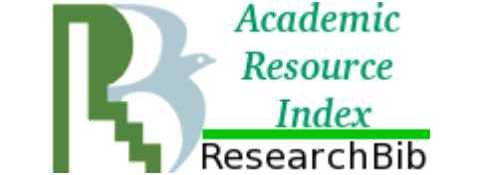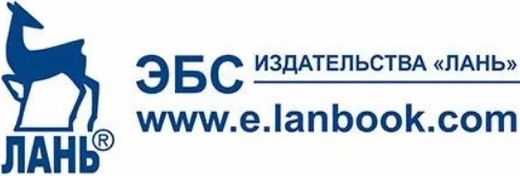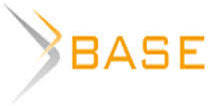FORECASTS FOR THE FORMATION OF AVAILABILITY AND AFFORDABILITY OF AGRICULTURAL PRODUCTS
Abstract
The problem is raised related to the need to coordinate supply and demand in the agro-food market for the main types of products at the level of healthy consumption norms. It is noted that such a statement of the problem successfully implements the transition to new scientific approaches to the study of food independence, which is based on the self-sufficiency of rational norms. To assess their achievement in the sphere of production and consumption, indices are proposed that characterize the level of formation of physical and economic accessibility of products. Their calculation comes down to assessing the ratio of the level of domestic production (domestic consumption) per capita with the rational norms recommended by the Russian Ministry of Health for a number of food products. As initial data, a joint report by OECD and FAO specialists on trends and prospects for the main agricultural commodity markets, assessed by the AGLINK-COSIMO model system, was used. Analytical calculations show that to ensure the desired level of physical and economic accessibility for a number of significant products (especially fruits, vegetables, milk), the established dynamics of their formation is not enough. In some cases (grain, potatoes, meat, eggs) there is a lack of correlation in the formation of physical and economic accessibility. In this situation, the saturation of the domestic market is partly due to the import of low-quality products, and at the same time the solution of global food problems due to high-quality products. The authors propose to supplement the concept in the field of ensuring food security with provisions based on the balance of physical and economic accessibility of products. These provisions will form the basis of state strategizing and forecasting the development of the agri-food market.
Keywords: forecasts, agri-food market, food security, physical accessibility, economic acces-sibility, rational norms
Introduction
At the beginning of 2020, as part of amendments to the Doctrine of Food Security of the Russian Federation, new strategic priorities were announced in our country aimed at ensuring the physical and economic accessibility of products for every citizen of the country at the level of rational consumption standards. The fairness of the task in this formulation is obvious, because, unlike the previous settings of the Doctrine to achieve self-sufficiency thresholds, the new task cannot be solved by reducing the volume of production and consumption per capita. So, for example, it was for milk. It is known that the growth of self-sufficiency will be observed if the rate of decline in production is less than the rate of decline in consumption [Order of the Ministry 2022]. Therefore, the authors of the article support the opinion of the scientific community [Aglink-Cosimo Model, 2022; OECD-FAO Agricultural, 2022; Samygin D.Yu., 2021] on the need for new approaches to food independence, where self-sufficiency of rational consumption norms is the basis. Obviously, it will be necessary to balance supply and demand at a level that covers the standard of healthy nutrition for every citizen. In this context, a comparative characterization of the level of production and consumption per capita with rational standards is of particular interest to assess the results achieved and the forecasts.
The measures taken in the field of agricultural and socio-economic policy help to create a certain dynamic in the development of production and consumption of basic agricultural products. There is a need to assess the ability of current trends to produce the desired results in the agro-food market in the foreseeable future. This assessment is absent from the agricultural and food security strategy papers [Sutygina A.I., 2020]. The available forecast indicators do not allow tracking trends in production and consumption for each type of product per capita.
Mainpart
To date, the most complete assessment of the level of physical and economic accessibility has been carried out by the scientific center «Economist» (New York, USA) based on panels of experts who selected groups of indicators reflecting the interconnectedness of the food system. The assessment is based on the corresponding indices. The essence of the indices is to assess the ability of consumers to buy food, their vulnerability to price shocks, as well as the availability of programs and measures to support consumers in the event of shocks, from the position of economic accessibility, and to measure agricultural production and on-farm opportunities from the position of physical accessibility, risk of supply disruptions, national food distribution capacity and research efforts to increase agricultural production [Urazgaliev V.Sh., 2019].
The dynamics of the indices of physical and economic accessibility of products in Russia (Figure 1) shows that over the period from 2012 to 2022 their value has increased (in terms of physical accessibility from 53.3 to 61.4; in terms of economic accessibility from 63.0 to 69.1). Although over the past year, these indices have decreased by 2.0 and 2.1 percentage points, respectively. As indicated in the analytical documents of the scientific center [Urazgaliev V.Sh., 2019], the decrease in economic accessibility is mainly due to the increase in the average cost of food, the decrease in physical accessibility is caused by a violation of the supply chain infrastructure.
In general, the results of measuring the level of physical and economic accessibility of products make it possible to determine their state and dynamics, but do not provide an answer about the availability of a particular type of product for each citizen of the country and its compliance with rational consumption standards. Therefore, in this study, an attempt was made to present the dynamics and forecast of indicators characterizing the physical and economic accessibility of the main types of products per capita and correlate them with rational norms. A similar approach has been successfully used to study strategic food balance planning [Forecast of the development, 2020].
In relation to these scientific studies, the authors proceeded from the fact that in the conditions of Russia's “isolation” it is strategically important to form the physical availability of products at the expense of domestic production.
From these positions, it is possible to calculate the index of formation of:
- accessibility as a ratio of the level of domestic production per capita with rational consumption rates;
- economic accessibility as a ratio of the level of consumption of products per capita with rational norms (Figure 2).
Exceeding the value of one according to these indices indicates the level of formation of physical and / or economic accessibility of products.
As initial data, a joint report of OECD and FAO specialists on the trends and prospects of the main agricultural commodity markets, assessed by the AGLINK-COSIMO model system, has been used. [Semin A.N., 2013]. The report contains basic and forecast values of the total volume of production and consumption of the most important types of agricultural products. A selection of data for Russia was made in the context of the main types of products available in the report (wheat, corn, beef, poultry, pork, milk, dairy products) for the period 2010-2031 [Zakshevsky V.G., Pechenevsky V.F., Narolina Yu.V., 2014]. Product data are combined into the usual groups: grain (wheat, corn), meat (beef, pork, poultry), milk (milk and dairy products).
The results of the study show that, at present, neither production nor consumption of many products have reached the level of rational norms and have insufficient dynamics of formation and development in the desired direction (Table 1).
Таблица 1
Динамика индексов сформированности физической
и экономической доступности продукции, коэфф.
Table 1
Dynamics of indices of formation of physical and economic accessibility of products, coef.
Products | Index of formation of economic accessibility | ||||||
Index of formation of economic accessibility | |||||||
2011 | 2014 | 2017 | 2018 | 2019 | 2020 | 2021 | |
Potatoes (90 kg) | 2.12 | 1.84 | 1.64 | 1.70 | 1.67 | 1.49 | 1.39 |
1.04 | 1.02 | 1.00 | 0.99 | 0.99 | 0.62 | 0.58 | |
Fruits and berries (100 kg) | 0.19 | 0.23 | 0.22 | 0.27 | 0.28 | 0.25 | 0.27 |
0.58 | 0.62 | 0.59 | 0.61 | 0.62 | 0.77 | 0.72 | |
Vegetables (140 kg) | 0.71 | 0.70 | 0.75 | 0.76 | 0.77 | 0.68 | 0.66 |
0.79 | 0.81 | 0.83 | 0.85 | 0.86 | 0.74 | 0.72 | |
Meat and meat products (73 kg) | 0.70 | 0.84 | 0.96 | 0.99 | 1.01 | 0.98 | 0.99 |
0.95 | 1.02 | 1.03 | 1.04 | 1.04 | 1.26 | 1.28 | |
Milk and dairy products (325 kg) | 0.66 | 0.63 | 0.64 | 0.65 | 0.66 | 0.67 | 0.68 |
0.81 | 0.81 | 0.78 | 0.77 | 0.79 | 0.84 | 0.81 | |
Eggs (260 pcs.) | 1.08 | 1.09 | 1.18 | 1.18 | 1.18 | 1.18 | 1.18 |
1.02 | 1.04 | 1.09 | 1.09 | 1.10 | 0.92 | 0.90 | |
Source: Compiled by authors according to [4, 6, 3]
Problems with achieving rational norms persist in the production of fruits, vegetables, and milk. Meat production fluctuates within the minimum threshold. When consuming, the problem of achieving rational norms is absent only for meat. For other types of products, there were no significant shifts towards healthy eating standards. For potatoes, vegetables and eggs, the changes are directed towards a decrease in the level of consumption, which is explained, first of all, by a drop in the purchasing power of the population's income.
The general trends are developing in such a way that for many types of products over the period under study, in the next decade, food needs will not be met at the level of rational norms of nutrition only at the expense of domestic production, the dynamics of which lags the dynamics of product consumption, which is clearly not enough to solve the rising food tasks (Figures 3-5).
For grain, there is a positive trend, where the curves of the levels of formation of the physical and economic accessibility of products are moving up. Physical accessibility is developing at a faster rate than economic accessibility (average 2.1% versus 0.05% per year). If these proportions are maintained, a significant share of grain production will be spent on solving the problems of global food security to the detriment of achieving national strategic priorities.
One of the most pleasing achievements in the field of ensuring food security is the balance of domestic demand and domestic supply in the meat market at the point of rational consumption rates. Today, our country has managed to reach the desired level of production and consumption of these products. Full formation of the physical and economic accessibility of meat should be maintained in the forecast period. The rates of formation of levels of physical and economic accessibility will average 1.9% and 0.7%, respectively. It should be considered in this trend that the coverage of rational norms occurred to a greater extent at the expense of poultry and pork meat and to a lesser extent at the expense of beef. With a consumption rate of 20 kg per person/year in 2021, physical and economic accessibility formed at the level of 11 kg and 13 kg, respectively. Unfortunately, no positive changes in these proportions are expected in the prospective period.
A difficult situation persists for milk, where both curves in the studied and prospective periods do not move towards unity, i.e., the level of absolute formation of physical and economic accessibility of products (Figure 5).
According to Figure 5, it can be seen that over the entire considered period of time, the supply from domestic producers will not be able to satisfy the entire volume of demand, and even more so to cover the norms of a healthy diet. If the level of physical accessibility will be formed at an average rate of 0.02%, then the level of economic accessibility, on the contrary, will be disbanded at a rate similar in absolute value. The predicted production of this type of product is estimated at about 211 kg per person/year in 2031 against 220 kg in 2021, which will cover about 82% of demand and 65% of rational consumption rates.
For sugar, vegetable oil and eggs, there are no problematic trends in the level of formation of physical and economic accessibility in the current and future periods. According to forecast data in Russia, the production and consumption of vegetable oil per capita by 2031 will exceed the rational norms by almost 5 times and 2 times, respectively.
Conclusion
Thus, a study of current and future trends in the production and consumption of agricultural products per capita has shown that for some of its types, the strategic tasks set to achieve the formation of physical and economic accessibility at the level of rational norms in the next decade will not be fully resolved. There is a disparity in the pace of formation of the physical and economic accessibility of products. The rate of production of certain types of products (grain, potatoes, eggs) is accompanied by lower rates of consumption of these products and vice versa (fruits, vegetables, meat, milk). A higher level of economic accessibility compared to the level of physical accessibility of products will lead to a flow of its cheap low-quality imports, and, conversely, a higher level of physical accessibility compared to the level economic accessibility will contribute to the export of high-quality products. As a result, for a number of products that are important for rational nutrition, a situation may arise with the primary saturation of the global food market, rather than the domestic one.
Therefore, to achieve priorities for balancing the production and consumption of agricultural products at the level of rational norms, it is proposed to supplement the concept in the field of ensuring food security with provisions based on the balance and interconnectedness of the physical and economic accessibility of products. In implementing these provisions, it is important to apply strategic foresight models that not only replicate current trends, but also allow you to determine the desired level of development of the agri-food sector and determine the course of action for the transition to it.

















Reference lists
pp. 42-53. (in Russian)
Pp. 2-8. (in Russian)